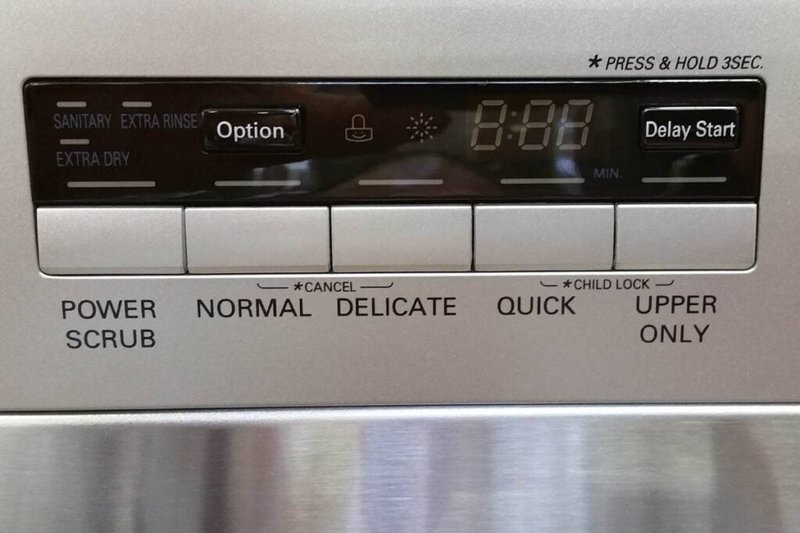
In simple terms, an E2 error code often relates to a problem with the dishwasher’s motor. Imagine trying to run with your shoelaces tied together—your dishwasher feels something like that. It’s usually a sign that the motor is either overloaded or there’s a blockage preventing it from functioning properly. Now, if this sounds complicated, stick with me; we’re going to break this down together. Understanding when and why to call a technician can save you time, stress, and potentially, the cost of a more serious repair.
Understanding the E2 Error Code
When you see the E2 error code, it’s like your dishwasher is waving a small “I’m having trouble” flag. This particular code is associated with the motor’s ability to turn the spray arms effectively. Think of the motor as the heart of your appliance, pumping water efficiently throughout, ensuring those dirty dishes come out sparkling clean. If the motor struggles, the whole process falters.
So, what causes this? Sometimes, it’s as simple as a blocked spray arm or a filter clogged with food particles. Imagine trying to breathe through a straw clogged with paper—it’s difficult, right? That’s similar to what your dishwasher might be experiencing. Other times, it might be due to a more significant issue like a faulty motor or electrical problem. In such cases, the dishwasher can’t perform its duties properly, and you’ll need to bring in a professional to diagnose and repair the underlying problem.
While it might be tempting to ignore the issue and hope it resolves itself, this is rarely an effective strategy. Small problems can quickly snowball into larger ones, leading to more costly repairs or even a full appliance replacement down the road. Your best bet is to address the issue head-on.
When Should You Try Troubleshooting?
Before reaching for the phone to call a technician, there are a few things you can try yourself. Start by turning off the dishwasher and unplugging it. This is equivalent to giving your appliance a little “timeout” for a reset. Once that’s done, check the filters and spray arms. They might just need a good clean. Picture a clogged coffee filter—that’s how your dishwasher feels with blocked spray arms.
Check to ensure the spray arms can move freely and that nothing is blocking their rotation. If they’re jammed with residue, a good rinse might do the trick. Also, inspect the filter for any leftover food debris—clean it if necessary to improve water flow.
However, if you’ve cleaned the filters and spray arms but the E2 code persists, it’s time to consider professional help. DIY fixes are great, but you don’t want to risk causing more damage. Continuing to run the dishwasher despite persistent error codes could lead to more serious motor damage.
Knowing When to Call the Technician
If the basic troubleshooting tips didn’t resolve the issue, calling a technician is a wise move. Trying to fix serious mechanical or electrical issues on your own could be like attempting to perform heart surgery with a spoon—it’s just not advisable and could make things worse.
When you call a technician, they’ll have the tools and knowledge to properly diagnose and fix what’s ailing your dishwasher. They’ll conduct more in-depth checks, such as testing the motor and electrical components, to identify if there’s a more serious fault at play. This could save you money in the long run by preventing further damage or even a complete breakdown, which could result in needing a new appliance altogether.
Moreover, professional technicians often have access to manufacturer-specific parts and repair techniques that the average DIY enthusiast might not. This can make the difference between a temporary fix and a long-lasting solution.
Preventative Measures and Final Thoughts
Now that you know how to handle an E2 error, let’s talk about preventing it in the first place. Like with any machine, regular maintenance is key. Routinely clean the filters and spray arms to keep them free of debris—much like cleaning your car’s windshield to keep your view clear. Consider running your dishwasher on a cleaner cycle every couple of months, using a dishwasher cleaner to keep the internal parts free from buildup.
Also, be mindful of how you load your dishwasher. Overloading can prevent the spray arms from moving properly, which might cause the motor to overwork. Imagine trying to lift a suitcase that’s too heavy. It’s a strain, and similarly, an overloaded dishwasher is under pressure.
In conclusion, understanding when to call a technician for your Whirlpool dishwasher error code E2 can prevent minor irritations from becoming costly headaches. While simple troubleshooting can sometimes solve the problem, professional help ensures your dishwasher is checked thoroughly and repaired correctly. Embrace these preventative tips, and you might just save yourself from seeing that dreaded E2 on your screen again.